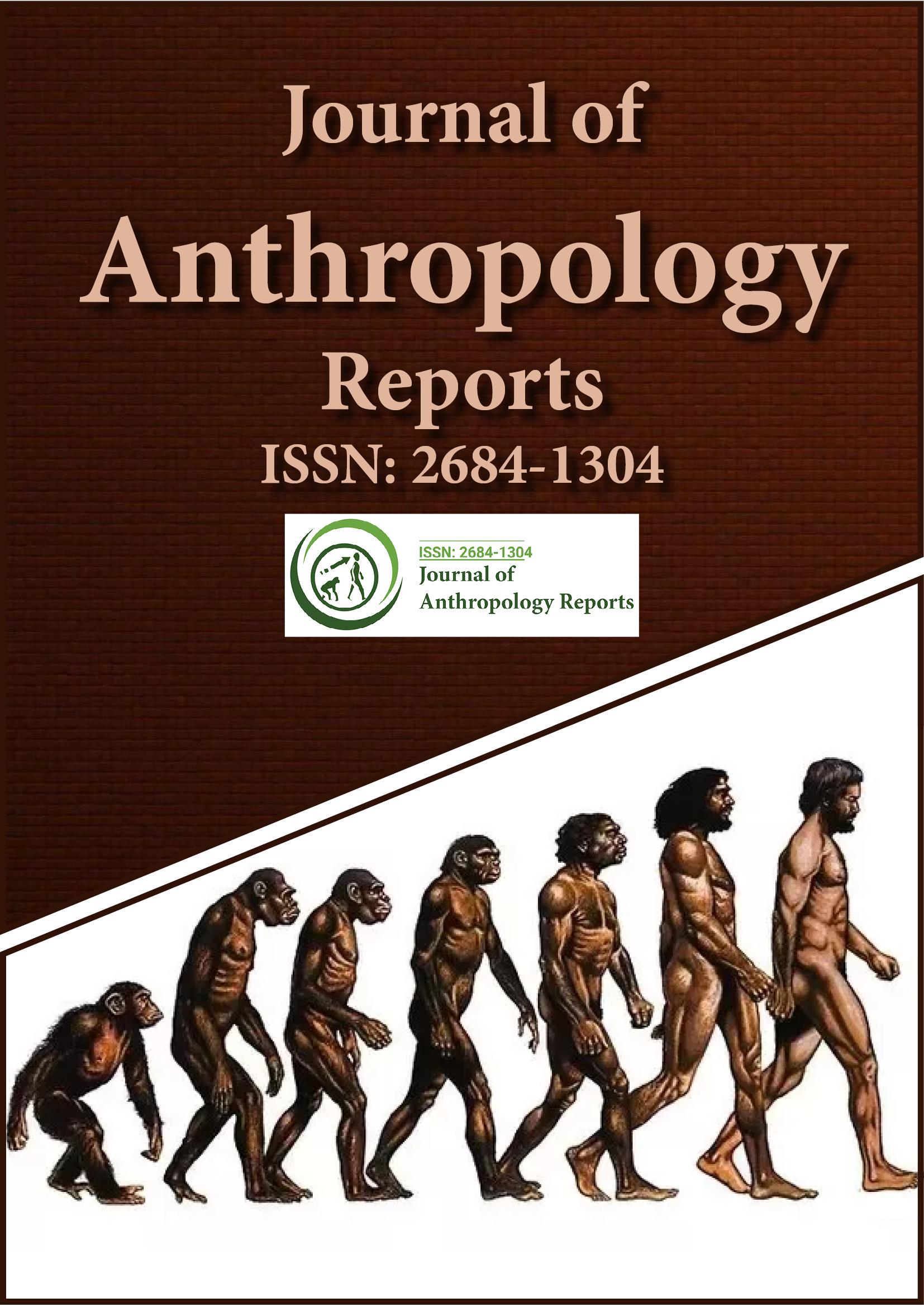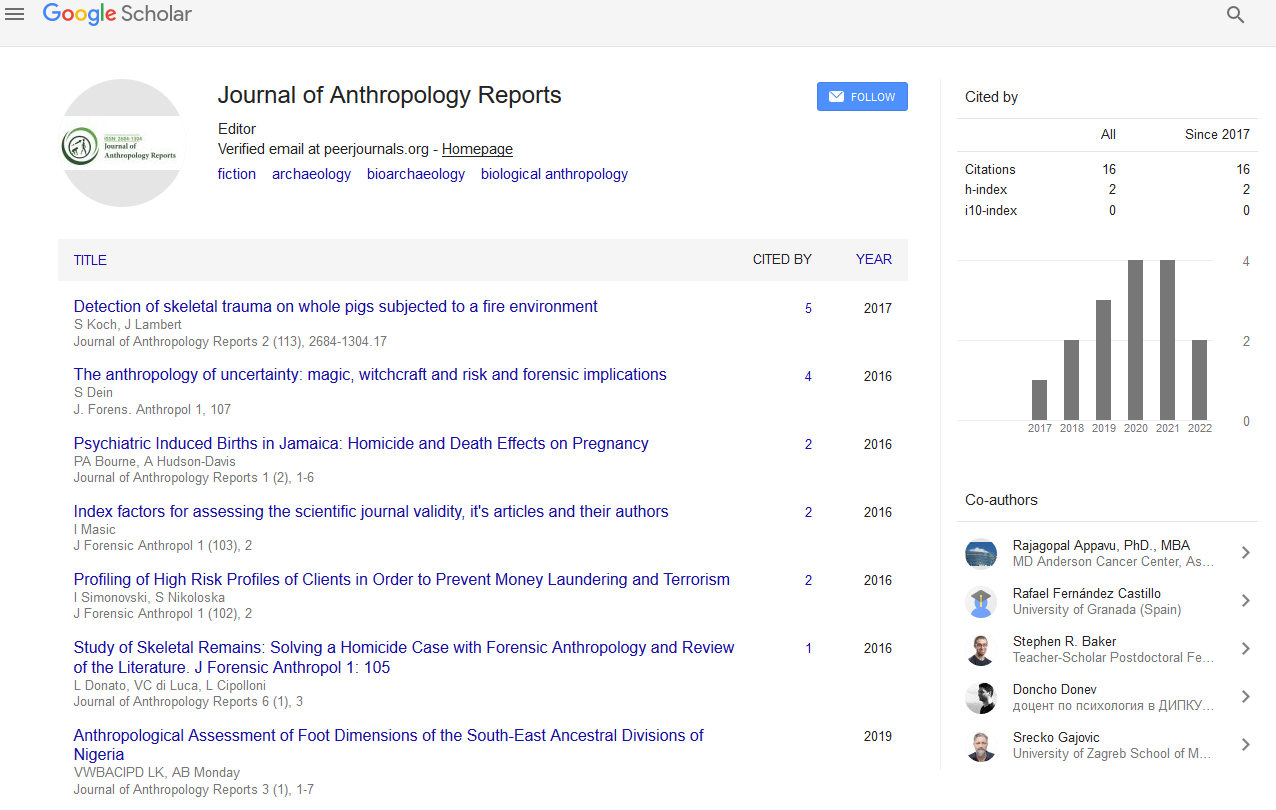Indexed In
- RefSeek
- Hamdard University
- EBSCO A-Z
Useful Links
Share This Page
Journal Flyer

Open Access Journals
- Agri and Aquaculture
- Biochemistry
- Bioinformatics & Systems Biology
- Business & Management
- Chemistry
- Clinical Sciences
- Engineering
- Food & Nutrition
- General Science
- Genetics & Molecular Biology
- Immunology & Microbiology
- Medical Sciences
- Neuroscience & Psychology
- Nursing & Health Care
- Pharmaceutical Sciences
Perspective Article - (2024) Volume 7, Issue 2
Genetic Tapestries: Insights into Autosomal, Y-Chromosomal, and Mitochondrial Markers in Human Phylogenetics
Sarah Davis Cassidy*Received: 13-May-2024, Manuscript No. JFA-24-26536; Editor assigned: 16-May-2024, Pre QC No. JFA-24-26536 (PQ); Reviewed: 30-May-2024, QC No. JFA-24-26536 (QC); Revised: 06-Jun-2024, Manuscript No. JFA-24-26536 (R); Published: 13-Jun-2024, DOI: 10.35248/2684-1304.24.7.201
Description
The DNA in human contains 22 sets of autosomes and a couple of sex chromosomes for example XX or XY and it is additionally tracked down external the core as mitochondrial DNA. Atomic DNA can be partitioned into two districts based on capability in particular, coding and non-coding areas. Human genome conveys different kinds of polymorphisms. Single Nucleotide Polymorphism (SNP) is the most fundamental sort of those polymorphisms that substitute one base for another.
Autosomal markers
The historical backdrop of a populace, populace structure, occasions, for example, relocation and quality stream with the time span of its event are explored by anthropological hereditary examinations using sub-atomic markers to portray various polymorphisms happen at different areas all around the genome. Utilization of autosomal markers in the examinations are more worthwhile than those of mitochondrial DNA (mtDNA) markers and Y chromosome present in that since they test a bigger piece of the genetic supply which can address a populace in general. Autosomal polymorphisms are not confined to either the fatherly or the maternal side since they are communicated from both the guardians and further can give data about the two genders. On passing down to every age, recombination and partition of alleles at various loci might be done autonomously of each other. The human collagen quality (COLlA2) is one such illustration of an autosomal coding marker which was viewed as supportive for human phylogenetic examination.
Chromosome DNA markers Tremendous measures of chromatin and hardly any qualities that are connected with male sex assurance are constituents of the Y chromosome. This chromosome is passed exclusively from father to child. The recombination of this chromosome with the X, other sex chromosomes happens at just a little part for example the pseudo autosomal area which is situated at the tips of its chromosomal arms. The designated district of the Y-chromosome for populace studies is the piece that doesn't recombine with other chromosome, alluded to as the MSY (male-explicit area of the Y). As the MSY doesn't share a relating locale on the X chromosome, so it is available in only one duplicate and it is haploid. The phylogenetic reproduction of populaces is benefitted by Ychromosome polymorphism as those changes that have happened will be given to people in the future without a trace of recombination. In this manner, it is not difficult to follow back and distinguish durable patrilineages to a typical male precursor. Double markers and STRs are the most generally involved MSY polymorphisms for phylogenetic investigations. The grouping of new Y chromosomal markers in populaces over the world has added to their rising adequacy for anthropological hereditary examinations, which as of not long ago lingered behind mtDNA studies.
Conclusion
In conclusion, mitochondrial DNA markers The other non-recombining part of the human genome is the mitochondrial DNA (mtDNA). The design of mtDNA is a twofold abandoned, round particle and situated in the mitochondria of the cell which is outside the core. The mtDNA is inherited from a mother to all of her children, meaning it is maternally passed down, so only her daughters will be able to transmit it to future generations. This marker is exposed to hereditary float and has a viable populace size equivalent to 1/4 that of the autosomes. The duplicates of mtDNA are available in numerous numbers per cell, hundreds to thousands, contingent upon the tissue. This component gives an understanding in old DNA studies.
Citation: Cassidy SD (2024) Genetic Tapestries: Insights into Autosomal, Y-Chromosomal, and Mitochondrial Markers in Human Phylogenetics. J Anthropol Rep. 7:201.
Copyright: © 2024 Cassidy SD. This is an open-access article distributed under the terms of the Creative Commons Attribution License, which permits unrestricted use, distribution, and reproduction in any medium, provided the original author and source are credited.

